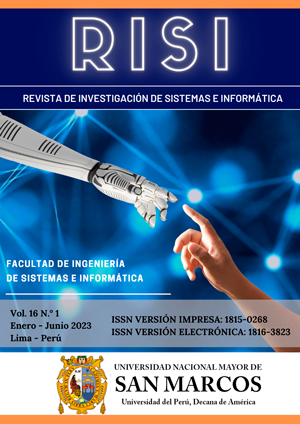Design of electrical lines with the DLTCAD software and the improvement in the times of installation processes of electrical lines of antennas in rural areas
DOI:
https://doi.org/10.15381/risi.v16i1.25493Keywords:
Design, electrical lines, DLTCAD, process times, installation, antennas, rural areasAbstract
This work aims to present the design of power lines with the DLTCAD software and the improvement in the process times for the installation of power lines for antennas in rural areas. Currently in rural areas of Peru the telecommunications service is limited and scarce, with 68.6% access to "Mobile Telephony" and 68.7% access to "Internet" (Source: ERESTEL "Residential Survey of Telecommunications Services", 2021, OSIPTEL), hence the importance of having antennas in rural areas, necessary to provide the telecommunications service to: schools, hospitals, police stations, municipalities, others, and to be able to begin to gradually close the digital gap in our country. DLTCAD is a Peruvian software and one of the best in the world in the calculation and design of power lines. The antennas located in rural areas require electricity for the proper functioning of their equipment, and to be able to operate and radiate the telecommunications service for the benefit of the most needy population with high rates of extreme poverty that do not have basic services such as: water , light and even more so in telecommunications, hence the importance of installing antenna power lines in rural areas, and the importance of designing these power lines with the use of an electrical design tool or software.
Downloads
Downloads
Published
Issue
Section
License
Copyright (c) 2023 Freddy Jhonatan Meléndez Ramírez

This work is licensed under a Creative Commons Attribution 4.0 International License.
AUTHORS RETAIN THEIR RIGHTS:
a. Authors retain their trade mark rights and patent, and also on any process or procedure described in the article.
b. Authors retain their right to share, copy, distribute, perform and publicly communicate their article (eg, to place their article in an institutional repository or publish it in a book), with an acknowledgment of its initial publication in the Revista de investigación de Sistemas e Informática.
c. Authors retain theirs right to make a subsequent publication of their work, to use the article or any part thereof (eg a compilation of his papers, lecture notes, thesis, or a book), always indicating its initial publication in the Revista de investigación de Sistemas e Informática (the originator of the work, journal, volume, number and date).


